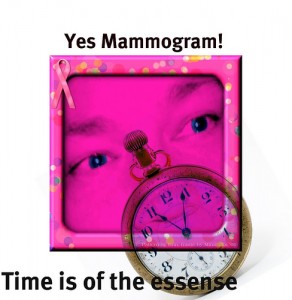Chances Are Your Mammogram Is Not Being Read By An Expert
 Is your radiologist an expert in reading mammograms? Unfortunately, in many cases, the answer may be no.
Is your radiologist an expert in reading mammograms? Unfortunately, in many cases, the answer may be no.
Every year, 200,000 women are diagnosed with breast cancer and 40,000 don’t survive. October is National Breast Cancer Month. It is dedicated to increasing awareness of the importance of early breast cancer detection. If properly conducted, mammography is the best tool for early detection of cancer.
In an effort to standardize care, the FDA requires physicians who interpret mammograms to read at least 40 mammograms per month over a 24- month period. Failure to have adequate documentation would jeopardize a physician’s eligibility to interpret mammograms, as well as subject the facility to a finding of noncompliance at the time of inspection.
However, 480 mammograms a year may not be nearly enough. According to studies, doctors need to read at least 2,500 films each year to stay sharp!
The dreaded mammogram that women over 50 are recommended to have every other year is bad enough, but getting a call to return for more studies is really scary. On average in the United States, one mammogram in 10, results in the patient being called back for further testing.
A woman who gets 10 mammograms at an average testing site will have a 65% chance of being called back at least once because of what is called a false positive test result. Quality of care guidelines for mammography facilities recommend aiming for a callback rate of 5-10%.
Only a small fraction of suspicious abnormalities turn out to be breast cancer.
A false positive is a test result that was originally diagnosed as “suspicious” turns out to be negative. Many mammograms are read as “suspicious”, but only a small fraction of suspicious abnormalities on mammograms (5–10%) turn out to be breast cancer. Regardless, each suspicious mammogram requires a follow-up medical visit.
Each such false positive test involves a 30% chance of having a sonogram (ultrasound), a 30% chance of a repeated physical exam or surgical consultation, and a 30% chance of having a biopsy.
Here are some ways to lower your risk of a false positive mammogram:
- Find a clinic where doctors read large numbers of mammograms (many more than the FDA’s 480).
- Insist on having your films read by the “lead interpretive physician,” who oversees a clinic’s quality controls.
- Look for clinics where two board-certified doctors independently interpret every film.
- And, above all, ask lots of questions.
Ladies, you have only yourselves to rely on to get a good mammogram reading, so you must take an active role in your care. Get the right information, so you can take control of your mammography and get the right care!
References:
[Photo By ♫ joyousjoym~ Blessings♥]
